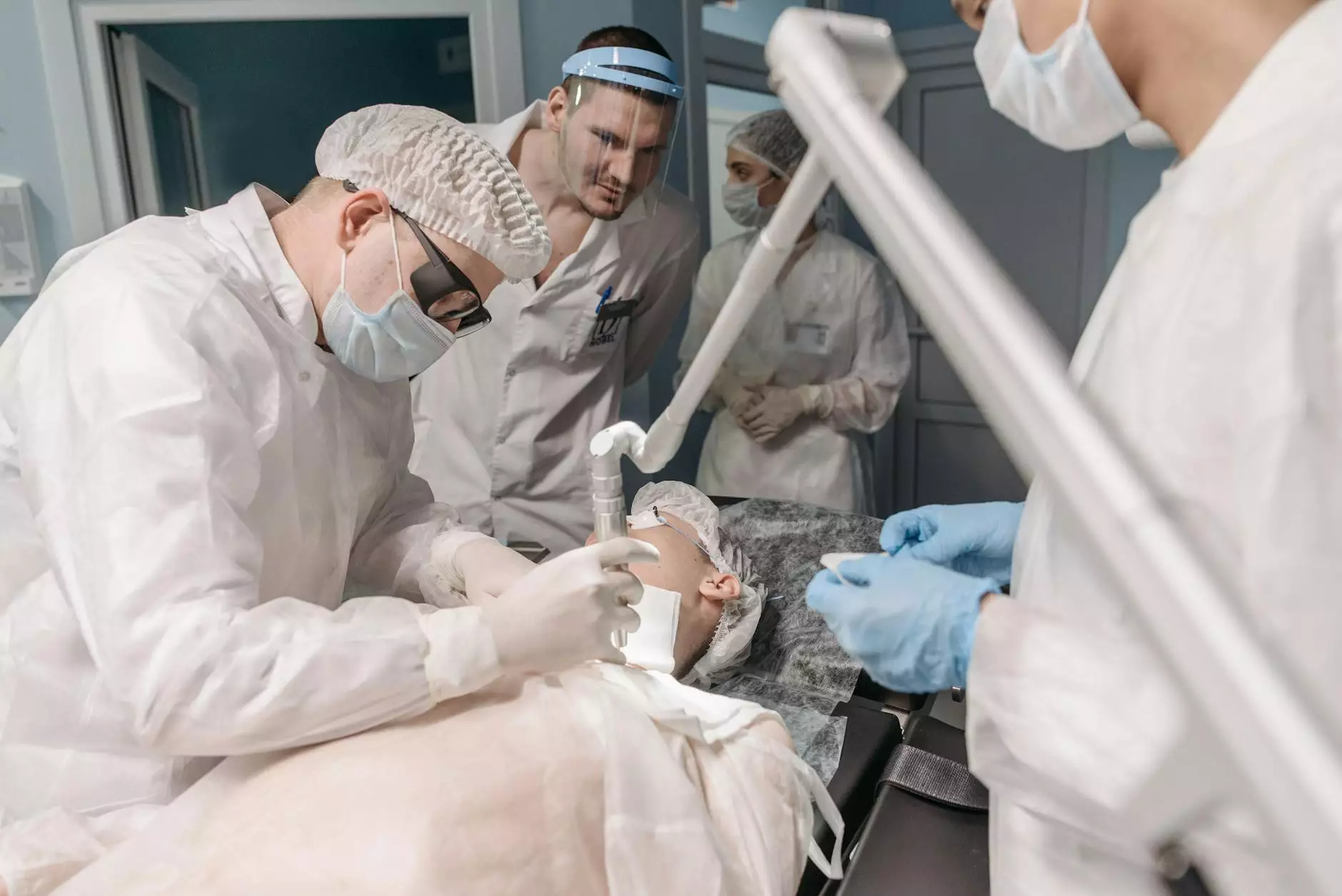Understanding Salpingo Oophorectomy Bilateral: A Critical Component of Women's Reproductive Health

Salpingo oophorectomy bilateral is a significant surgical procedure in the realm of gynecology, playing a vital role in managing various gynecological conditions, including ovarian cancer, endometriosis, and other ovarian or fallopian tube disorders. As women navigate their health journey, gaining comprehensive knowledge about this procedure is essential for informed decision-making and understanding its implications.
What Is Salpingo Oophorectomy Bilateral? An In-Depth Overview
Salpingo oophorectomy bilateral is a surgical intervention involving the removal of both fallopian tubes (salpingectomy) and both ovaries (oophorectomy). This procedure is performed to eliminate diseased or at-risk reproductive organs, significantly impacting hormonal balance, reproductive capacity, and overall health.
Terminology Breakdown
- Salpingo: Refers to the fallopian tubes.
- Oophorectomy: The removal of ovaries.
- Bilateral: Indicates both sides, i.e., both ovaries and fallopian tubes are removed.
Indications for Salpingo Oophorectomy Bilateral
Many clinical situations warrant this surgical procedure, including:
- Ovarian Cancer and Risk Reduction: For women with a high genetic risk, such as BRCA mutations, prophylactic bilateral salpingo-oophorectomy significantly reduces the risk of ovarian and fallopian tube cancers.
- Endometriosis: Severe endometriosis involving both ovaries and tubes that unresponsive to medical therapy.
- Benign Ovarian or Tubal Conditions: Such as cysts, tumors, or infections that threaten health or fertility.
- Pelvic Pain: Chronic pain attributed to diseased ovaries or tubes.
- Other Gynecological Cancers: Advanced uterine or other pelvic cancers that involve or threaten reproductive organs.
The Surgical Procedure: What to Expect
Salpingo oophorectomy bilateral is typically performed via minimally invasive methods, ensuring less postoperative pain, quicker recovery, and reduced hospitalization time. The common techniques include:
Laparoscopic Surgery
This is the most prevalent approach, involving small abdominal incisions through which specialized instruments are inserted. Advantages include minimal scarring, faster return to daily activities, and excellent visualization of pelvic organs.
Open Surgery (Laparotomy)
Reserved for complex cases or large tumors, this method involves a larger abdominal incision providing direct access to pelvic tissues.
Benefits of Salpingo Oophorectomy Bilateral
Performing this procedure can offer significant health benefits, particularly when used as a preventive or therapeutic intervention:
- Cancer Risk Reduction: Significantly lowers the risk of ovarian and fallopian tube cancers, especially in women with genetic predispositions.
- Symptom Relief: Alleviates symptoms associated with ovarian cysts, endometriosis, or other benign conditions.
- Hormonal Impact: Upon removal of ovaries, estrogen and progesterone levels decline, which can be beneficial or require hormone replacement therapy.
- Fertility Impact: The procedure results in infertility, which is a crucial consideration for women desiring future pregnancies.
Understanding the Risks and Considerations
While salpingo oophorectomy bilateral is generally safe, awareness of potential risks is vital. These include:
- Hormonal Imbalance: Sudden menopause symptoms such as hot flashes, mood swings, and osteoporosis risk.
- Surgical Complications: Bleeding, infection, injury to surrounding organs, or anesthesia-related issues.
- Emotional and Psychological Impact: Adjustments related to loss of fertility and hormonal changes.
- Long-term Health Effects: Increased risk of cardiovascular disease and osteoporosis without proper management.
Postoperative Care and Recovery
Post-surgical protocols focus on ensuring healing and managing menopausal symptoms if ovaries are removed. Typically, recovery includes:
- Rest and limited physical activity for the first few weeks.
- Gradual return to daily routines.
- Hormone replacement therapy (HRT) considerations, especially in premenopausal women.
- Regular follow-up visits to monitor recovery and overall health.
Advancements and Future Perspectives in Women’s Gynecological Surgery
The field of salpingo oophorectomy bilateral surgery has advanced markedly over recent decades. Enhanced imaging, minimally invasive techniques, and personalized medicine now enable tailored approaches that minimize risks and improve outcomes.
Emerging Technologies and Techniques
- Robotic Surgery: Provides higher precision and access to complex cases.
- Precision Medicine: Genetic testing informs risk assessment and personalized intervention strategies.
- Fertility Preservation: Options such as ovarian tissue cryopreservation are considered before prophylactic surgeries.
The Role of Obstetricians & Gynecologists in Managing Salpingo Oophorectomy Bilateral
Specialist obstetricians & gynecologists, such as those at drseckin.com, play a pivotal role in diagnosing, advising, and performing salpingo oophorectomy bilateral when indicated. Their expertise ensures that patients receive personalized care aligned with their health status, preferences, and reproductive goals.
They also provide comprehensive counseling on the procedure's implications, including hormonal management, fertility considerations, and long-term health planning.
Choosing the Right Healthcare Provider for Your Gynecological Needs
When considering a salpingo oophorectomy bilateral or similar procedures, selecting an experienced and reputable gynecologist is crucial. Factors to consider include:
- Specialization in minimally invasive gynecological surgery
- Experience with prophylactic versus therapeutic procedures
- Certifications, credentials, and patient reviews
- Availability for postoperative care and follow-up
Conclusion: Empowering Women Through Knowledge and Expert Care
Salpingo oophorectomy bilateral represents a cornerstone in the management of various gynecological conditions, with profound implications for women’s health and wellbeing. Advances in surgical techniques and personalized medicine continue to enhance patient outcomes, offering hope and improved quality of life for women worldwide.
Whether used as a preventive measure, a treatment for existing conditions, or part of complex cancer management, this procedure underscores the importance of expertise, thorough understanding, and patient-centered care. Partnering with experienced obstetricians & gynecologists ensures that women receive optimal treatment tailored to their individual needs and health goals.
For detailed consultations and professional guidance, visit drseckin.com — your trusted partner in women’s health and well-being.









